|
|
Post by dem on Feb 27, 2008 8:34:01 GMT
Yep, another brand, spanking new section. Although our coverage of bibliographical aids/ reference works has been spartan to date, I figured to lump these together in one dismal vault and see if we can make something of it. If not, it can always be buried as a sub-board someplace else.
E. F. Bleiler's Guide to supernatural fiction and Mike Ashley's Who's who in horror & fantasy fiction have been justly lauded on the board before, of course, and I seem to have amassed a few vampire literature resources in my time, but which of these research tools do YOU find indispensable?
|
|
|
|
Post by Calenture on Feb 27, 2008 10:33:00 GMT
 Out of the Deep, cover for a Walter de la Mer collection by Hans Ulrich and Ule Osterwalder for the 'Bibliothek des Hauses Usher' issue, edited by Kalju Kirde. Out of the Deep, cover for a Walter de la Mer collection by Hans Ulrich and Ule Osterwalder for the 'Bibliothek des Hauses Usher' issue, edited by Kalju Kirde. 1978, Thames and Hudson, Collier Books At a glance this looks like one of the flashy coffee table books you find on remainder shelves, all sparkle and not a lot else. In fact, I found it second-hand and use it often. It's here that I learned of Piranesi's Carceri d'invenzione, the drawings of imaginary prisons, one of which was used for the cover of Filthy Creations 2. Weird Tales (including a full-page colour repro of the 'nude' cover by Mrs Avery Brundage that offended many readers and HPL himself), sketches by Tolkein, Tenniel's Alice, Lovecraft (recent covers and Arkham House), Josh Kirby, Frank Kelly Freas (sketch for The Werewolf of Ponkert), M R James illustrations, Heavy Metal... The knowledgeable text includes references to Seabury Quinn, Sax Rohmer, Machen, Poe, Peake, Onions, O'Brien, Charles Williams, etc. I listed Franz Rottensteiner as a contributor to Vision of Tomorrow 3 yesterday on the Paperback Fanatic 6 thread. This volume, A4, softcover, 160 pages, 202 illustrations, 40 in colour. Many pages have tinted picture backgrounds. Rottensteiner is the author of Science Fiction Book and the anthology View from Another Shore: European SF; also the editor of a Fantastic Novels series for Paul Zsolnay Verlag, Vienna, and a series of fantasy anthologies. There's a limit to how much you can cram into 160 pages, but this one isn't boring. This thread could run a bit... |
|
|
|
Post by weirdmonger on Feb 27, 2008 10:49:43 GMT
As well as the Mike Ashley Who's Who, I have Donald H Tuck's massive two volume ENCYCLOPAEDIA OF SCIENCE FICTION AND FANTASY (1974 vol 1, 1977 vol2). Don't be put off by the main title, as it covers Horror and Weird Fiction as well. All books up to 1968, contents etc, by author and title.
Subtitled: A bibliographic survey of the fields of science fiction, fantasy and weird fiction through 1968.
Did he ever produce a Volume 3 on mags etc - my version says this is in preparation.
|
|
|
|
Post by Calenture on Feb 27, 2008 11:11:57 GMT
...I have Donald H Tuck's massive two volume ENCYCLOPAEDIA OF SCIENCE FICTION AND FANTASY (1974 vol 1, 1977 vol2). Don't be put off by the main title, as it covers Horror and Weird Fiction as well. All books up to 1968, contents etc, by author and title. Subtitled: A bibliographic survey of the fields of science fiction, fantasy and weird fiction through 1968. Did he ever produce a Volume 3 on mags etc - my version says this is in preparation. Yesterday I meant to post a link to a resource of magazine covers and info that I found while looking for something else. The pages I found showed pulp, horror, gangster covers. This page says that the Donald H Tuck book now runs to 3 volumes: Galactic Central - Oddments |
|
|
|
Post by redbrain on Feb 27, 2008 13:15:43 GMT
My main reference source remains Mike Ashley's Who's Who in Horror and Fantasy Fiction - which, I find, more often than not tells me as much as I wish to know. Beyond that, I usually turn to more specialised reference books. An example is S T Joshi's Sixty Years of Arkham House, which has yielded a lot of information of interest to me. Another that deserves mention is Who's Hugh? subtitled An SF reader's guide to pseudonyms compiled by Roger Robinson. In spite of the subtitle, it covers sufficient writers of interest to the Vault to justify its mention here.
|
|
|
|
Post by Calenture on Jul 24, 2008 19:55:11 GMT
It Don't Worry Me by Ryan Gilbey (Faber & Faber, 2000)I found a couple of interesting reference volumes on remainder shelves yesterday. Aside from the Jaws cover, the blurb suggests a writer whose views aren't dissimilar to those of many members here. "The 1970s were a golden age for US film-making, with the emergence of such talents as Mrtin Scorsese, Francis Ford Coppola, Steven Spielberg, George Lucas. Brian De Palma and Robert Altman. Ryan Gilbey now looks afresh at the remarkable movies of this era, and the gifted men who made them. "Today these directors are sometimes lambasted as sell-outs or burn-outs, but their finest films in the 1970s - from American Graffiti to The Conversation, Nashville to Carrie, Jaws to Taxi Driver - still appear as urgent and innovative as they did on first release, and continue to inspire young film-makers at a time when Hollywood movies are once again sadly formulaic." Elmer McCurdy: The Misadventures in Life and Afterlife of An American Outlaw
by Mark Svengold (Fourth Estate, 2005) The other book I found remaindered was this one, the tale of how an American outlaw's mummified body ended up painted day-glow orange and hung in a fairground House of Laffs, until being found by the crew shooting an episode of Six Million Dollar Man... "As if McCurdy's first five postmortem years were not bizarre enough, in 1916 his corpse appeared with a traveling carnival after one of the proprietors falsely claimed to be a relative interested in giving McCurdy a decent burial. Instead, the show put him in a macabre display called the "Oklahoma Outlaw," and McCurdy began a sixty-year career in wax museums, carnivals, and the like before coming to rest in the 19705 in a Long Beach, California, amusement park where he was spray painted Day-Glo red and hung on the ceiling of the Laff-in-the-Dark fun house. "McCurdy's new owners thought the corpse was a funhouse fake, despite one employee who recalled that when they drilled holes in McCurdy's feet to hang him up "some yellow, almost gooey stuff came out, and of course at that point I thought-my god, what have we got hère?" (p. 214). What they had became clear only after one of poor Elmer's arms came off in 1976 during the shooting of an episode of-I am not making this up-The Six Million Dollar Man being filmed at Laff-in-the-Dark. ("We can rebuild him.... Better than he was." Oh, the irony.)" The above text grabbed from here. Skimming other pages of the book is similar to reading Stephen KIng's Danse Macabre, which can't be bad.
|
|
|
|
Post by severance on Jul 24, 2008 21:04:55 GMT
 Not sure who this Andy Boot character is (whose name is conspicuously absent from the front cover), but this ain't too shabby. |
|
|
|
Post by Michael Connolly on Apr 25, 2012 10:43:28 GMT
I've read many reference books. Overall, the best seems to be the most recent, Supernatural Literature of the World: An Encyclopedia, edited by S.T. Joshi and Stefan Dziemianowicz, published in 2005. A three-volume set, it is very expensive.
|
|
|
|
Post by cauldronbrewer on Nov 3, 2012 17:18:58 GMT
Having recently purchased Marshall B. Tymn's Horror Literature--against Neil Barron's advice--I thought I'd have a go at the ten reference works I've found the most interesting and/or useful. 1. E. F. Bleiler, The Guide To Supernatural Fiction (1983)Ugly as hell, mind-bogglingly dense, and still king of the hill. I wish that I could afford a copy, but at least the local library has a circulating copy. 2. Mike Ashley, Who's Who in Horror and Fantasy Fiction (1977)I've consulted my copy so many times that the pages have come unglued from the spine. Ashley's three-volume history of science fiction magazines is also outstanding. 3. Robert Weinberg, The Weird Tales Story (1977)I keep going back to this one for details on obscure writers and stories. 4. Neil Barron, Horror Literature: A Reader's Guide (1990)Includes excellent coverage of the field from the Gothic era to the 1980s. Like Bleiler, Barron isn't shy about including negative views. 5. Brian J. Frost, The Monster with a Thousand Faces (1989), The Essential Guide to Mummy Literature (1997), and The Essential Guide to Werewolf Literature (2003)Each of these is a rich resource for anyone interested in seeking out rare and overlooked tales. 6. Stephen Jones and Kim Newman (Eds.), Horror: 100 Best Books (1998) and Horror: Another 100 Best Books (2005)Useful not only for finding new reading material but also for provoking debates among horror fans. 7. Marshall B. Tymn, Horror Literature: A Core Collection and Reference Guide (1981)Barron would no doubt be happy to hear me say that Tymn's book isn't as good as his own take on the same theme. This one covers the Gothic period extensively but is weaker on modern horror fiction. It's still worth reading, however. 8. Les Dainels, Living in Fear (1975)An entertaining, idiosyncratic look at the genre. 9. Jack Sullivan (Ed.), The Penguin Encyclopedia of Horror and the Supernatural (1986)A thick, attractive book that I somehow don't find myself consulting very often. 10. Ted Klein, Raising Goosebumps for Fun and Profit (1988)It might be a stretch to call this a reference work, but I'm including it for his list of "The 25 Most Common Horror Plots," which is a hoot. Among the reference/bibliographic works that I don't own but would like to are The Book of Lists: Horror and the aforementioned Supernatural Literature of the World (fat chance that I'll ever own that one). |
|
|
|
Post by dem on Nov 3, 2012 20:09:20 GMT
That's a marvellous listing and no mistake. To bring it up to thirteen, I'll offer Greg Cox's The Transylvanian Library (Borgo Press, 1993) as a useful and consistently entertaining annotated vampire bibliography, E. S. Turner's Boys Will Be Boys (Michael Joseph, 1948: Penguin, 1976), which, while not strictly a reference work, opened up the proverbial whole new world to me, and the invaluable little booklet that is Rosemary Pardoe & friends' The James Gang (later expanded upon in Ramsey's Meddling With Ghosts). Later: .... so i cast a belated glance along the shelf of shame, and how could I possibly have forgotten Robert Kenneth Jones and his The Shudder Pulps? or Peter Penzoldt's alarmist anti-horror lit tract in The Supernatural In Fiction ? Debbie Cross's indispensible Down The Badger Hole: R. L. Fanthorpe - The Badger Years. Once you get past the insufferably pompous title, even Prof. Leonard Wolf's Horror: A Connoisseur's Guide has much to recommend it.
Looks like this section is due a revival .... |
|
|
|
Post by jamesdoig on Nov 3, 2012 21:21:21 GMT
Having recently purchased Marshall B. Tymn's Horror Literature--against Neil Barron's advice--I thought I'd have a go at the ten reference works I've found the most interesting and/or useful. Couple more, too fat to scan on my little scanner: David Pringle (ed) Horror, Ghost & Gothic Writers, Ashley & Contento's Supernatural Index, Clute and Grant's Encyclopedia of Fantasy. And these are pretty good: 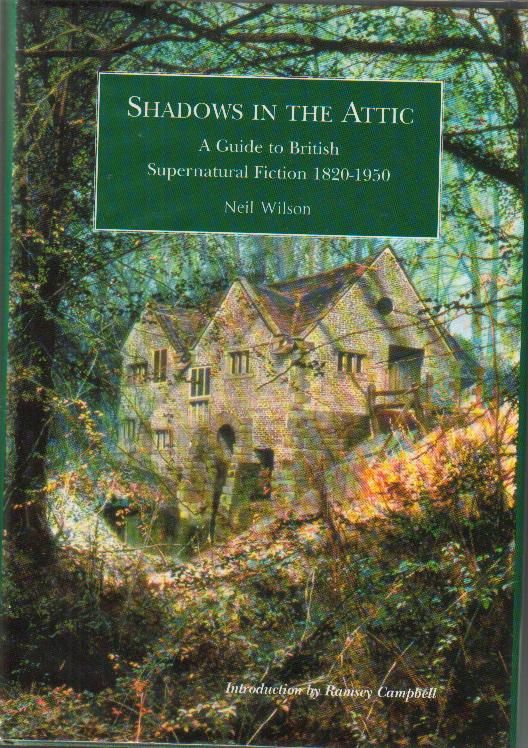  This omits a lot of stuff: 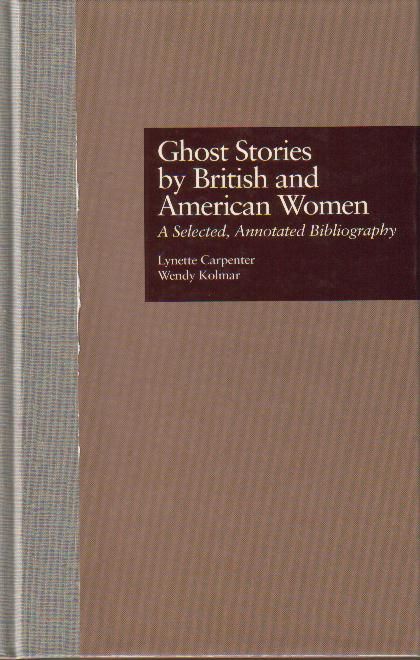 |
|
|
|
Post by jamesdoig on Nov 3, 2012 21:44:22 GMT
Talking of reference books, catalogues are often a great source of info about rare books: This Sotheby's catalogue lists the AERM Stevens collection of detective and ghostly books, plus is has an Aleister Crowley lot: 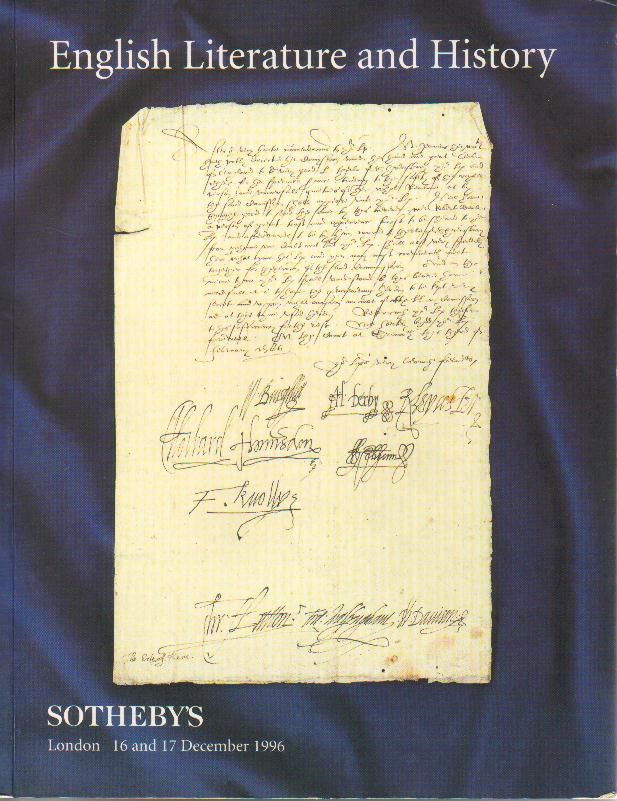 Catalogue of Dennis Wheatley's library when it was flogged by Blackwells contains a few interesting things:  Jarndyce books opposite the British Museum is famous for 19th century fiction - if you've a million quid you could buy some of the choice items in their current Dickens catalogue. The Penny Bloods catalogues are gold: 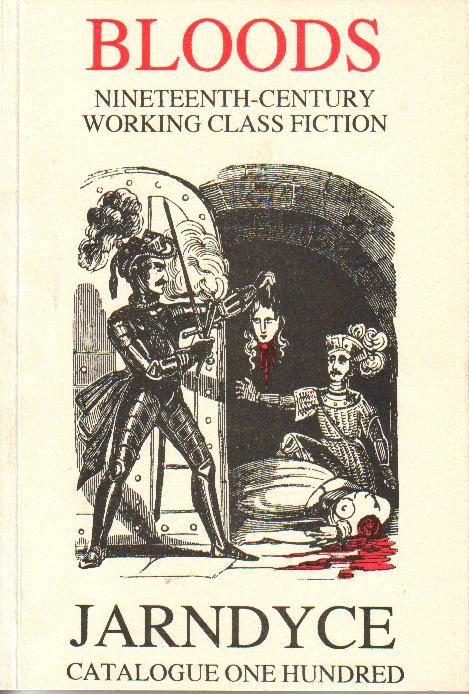 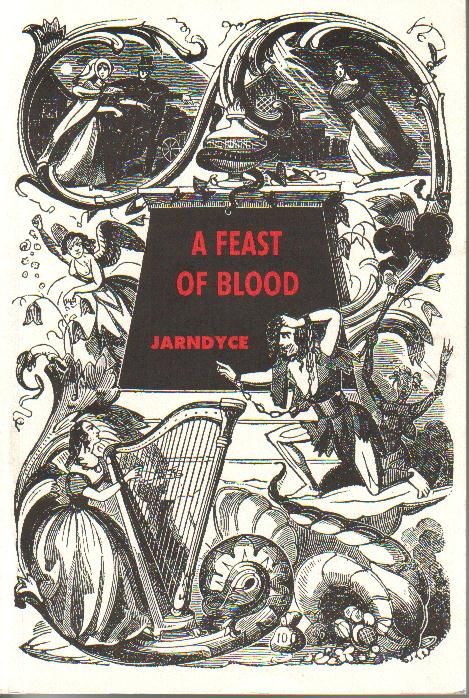 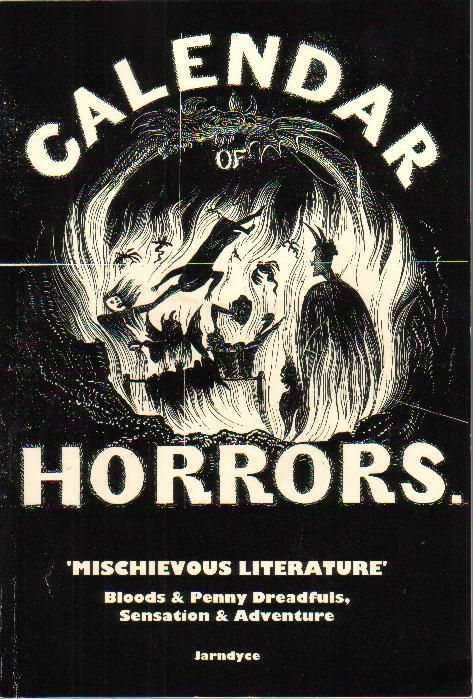 |
|
|
|
Post by dem on Nov 4, 2012 8:30:26 GMT
I think we can safely say James has raised the bar! Particularly like the look of those Jarndyce catalogues, likewise the Wheatley catalogue. Ramsey, if you read this, have you ever given any thought to cataloguing your collection? My guess is, it must rival the library of terror at Probert Towers. Margaret L. Carter's Vampire in Literature: A Critical Bibliography (UMI 1999) deserves a mention. Those who've studied Daniel Seitler's bibliography in Otto Penzler's The Vampire Archives might wonder at a certain similarity between the two that at times borders on the supernatural. Sad thing is that, Mr. Seitler's effort effectively renders Margaret's pioneering work obsolete by virtue of bringing the listing up to date. It's a similar story with Martin V. Riccardo's Vampire's Unearthed (Garland, 1983). "When Vampires Unearthed came out, I sent a notice about it as a courtesy to various writers including Raymond T. McNally. To my surprise, when McNally's book Dracula Was A Woman came out, I discovered that the bulk of the bibliography in the back was lifted directly from Vampires Unearthed right down to the arbitrary categories I divided the work in and the style of listing movies and their actors. Other material from Vampire's Unearthed is incorporated in his book. If he had given any acknowledgement to Vampire's Unearthed (which was a long an arduous effort to put together) I wouldn't have minded. My work is nowhere mentioned in his book. Since both books came out in 1983 the average person would have no way of knowing who stole from whom. Let us hope there is more honour among vampires."- Interviewed in Eric Held's Vampire Information Exchange Newsletter # 53, April 1991, a "The Lure of Martin V. Riccardo" tribute issue. For those who share an interest in the great Vampire/ Gothic/ Pagan/ Fetish fanzine epidemic of the late eighties - mid-nineties, seek out Mick Mercer's labour of love, The Hex Files, the initial inspiration for Vault's 'Cut, Paste & Photocopy' section. |
|
|
|
Post by cauldronbrewer on Nov 4, 2012 12:13:57 GMT
Those catalogues look amazing.
I've thought about buying Cox's The Transylvanian Library and Pringle's Horror, Ghost & Gothic Writers. I was all set to add Wilson's Shadows in the Attic to the list until I saw what it's going for these days.
The Fax Shudder Pulps would look great on the shelf next to the Fax The Weird Tales Story.
|
|
|
|
Post by ramseycampbell on Nov 4, 2012 21:32:39 GMT
I think we can safely say James has raised the bar! Particularly like the look of those Jarndyce catalogues, likewise the Wheatley catalogue. Ramsey, if you read this, have you ever given any thought to cataloguing your collection? My guess is, it must rival the library of terror at Probert Towers. I think it may! I've given mine a thought and then a shudder. |
|